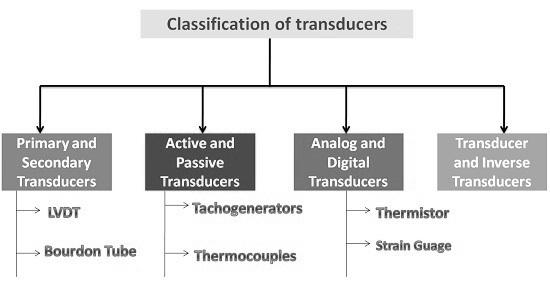Sensor vs. Transducer: Key Differences Explained
Advertisement
It’s easy to get confused between the terms “sensor” and “transducer,” as they often work together. Let’s break down the differences to clear up any confusion.
What is a Transducer?
Essentially, a transducer is a device that converts energy from one form to another. Think of it as a translator between different types of energy.
Examples of Transducers:
- An RF antenna: Converts electrical signals into electromagnetic waves (and vice versa).
- A device converting acceleration into a voltage.
- A device converting voltage into pressure.

Transducers can be categorized in various ways:
- Active vs. Passive: Active transducers generate their own energy while passive ones require an external power source.
- Analog vs. Digital: Analog transducers provide a continuous output, while digital transducers provide a discrete output.
- Primary vs. Secondary: Primary transducers directly respond to the physical quantity being measured, whereas secondary transducers convert the output of the primary transducer into a more usable form.
- Transducer vs. Inverse Transducer: A transducer converts non-electrical energy to electrical energy, while an inverse transducer converts electrical energy to non-electrical energy.

What is a Sensor?
A sensor, on the other hand, is a device that senses a physical quantity and converts it into an analog electrical form. This electrical form can then be measured by an instrument or user. The output can manifest as changes in capacitance, voltage, inductance, resistance, etc., depending on the application.
A key thing to remember is that a sensor can often be a part of a larger transducer, particularly at the initial stage of the energy conversion process.
The relationship:
Physical Parameter -> | Sensor | -> Electrical Output
How They Relate: An Example
Consider a microphone:
- It’s a transducer because it converts acoustic energy (sound waves) into electrical energy.
- It’s also a sensor because it senses the sound waves and generates an electrical signal as a result.
Think of it this way: the microphone is a complete unit that takes in sound and gives out electricity (transducer), but its first step in doing so is sensing those sound waves (sensor).
Other Examples of Sensors
While a microphone is a good example of a transducer that incorporates a sensor, many other sensors don’t fit that mold. Here are a few:
- Temperature sensor
- Humidity sensor
- Position sensor
- Force sensor
In essence, a sensor is about the sensing of a physical quantity, while a transducer is focused on the conversion of energy from one form to another. They are closely related, and often work together, but have distinct roles in the world of measurement and control.
Advertisement
 T&M
T&M 





